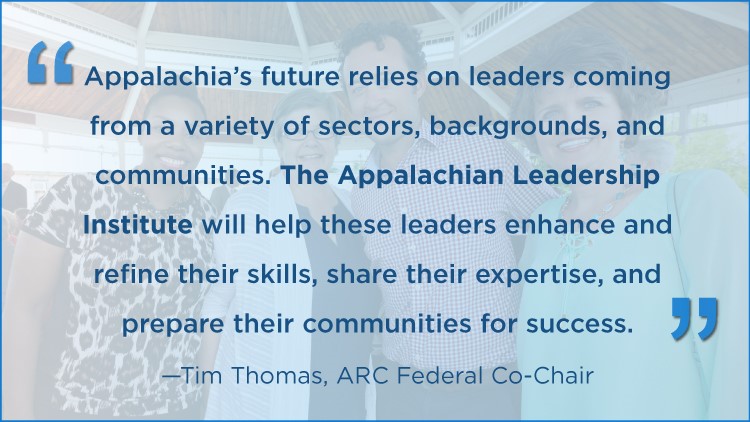To implement provisions of the Bipartisan Budget Act of 2018, CMS has finalized provisions allowing Medicare Advantage (MA) plans to offer additional telehealth benefits as part of the basic benefits. While Medicare Advantage plans have always been able to offer more telehealth benefits than traditional Medicare, this rule gives MA plans even more flexibility with paying for these services, which could expand telehealth further. For example, enrollees in urban and rural areas may be able to receive telehealth from their homes. In 2017, about one in four rural Medicare beneficiaries were enrolled in an MA plan.
Latest CMS Podcast Episode Features Rural Providers
During the week of April 1, 2019, CMS released the latest episode of their podcast, CMS: Beyond the Policy. This episode brings highlights from the 2019 CMS Quality Conference, including perspectives from rural providers at the conference. The theme of this year’s conference was “Innovating for Value and Results.”
HRSA Requests Public Feedback on Health Center Service Areas
The Health Resources and Services Administration (HRSA) recently announced an upcoming request for information (RFI) on its Health Centers Program. HRSA will be seeking input from the public on service area considerations that may inform decisions to expand the program through the addition of new service delivery sites onto existing health centers. The considerations include factors such as proximity to existing health centers, parameters for unmet need, and consultation with other local providers. The Service Area RFI announcement will begin with a 30-day preview period. Instructions on how to submit feedback are forthcoming. Following the preview period, HRSA will accept public feedback for 60 days.
Penn State Health Policy Student Receives Community Achievement, Alumni Awards
UNIVERSITY PARK. Pa. — Hannah Ross, a student in the integrated undergraduate/Master of Health Administration program in the Department of Health Policy and Administration (HPA), has recently received two different Penn State awards in recognition of her leadership, scholarship and service to the community.

2019 Jennifer S. Cwynar Community Achievement Award
Ross is 2019 recipient of the Jennifer S. Cwynar Community Achievement Award, which was presented on April 8 during the Annual Stanley P. Mayers Endowed Lecture and Health Policy Administration student awards ceremony. Lisa Davis, director of the Pennsylvania Office of Rural Health (PORH) and outreach associate professor of health policy and administration, presented the award.
The Jennifer S. Cwynar Community Achievement Award recognizes community achievement by an HPA senior undergraduate student who has demonstrated service and commitment to a community or an underserved population, preferably, but not exclusively, in a rural area of Pennsylvania.
Ross was nominated for the award by Diane Spokus, associate director of professional development in HPA. In her nomination, Spokus noted that Ross’ contributions to the HPA undergraduate program have been invaluable.
Spokus noted that she has seen Ross develop leadership, facilitation and management skills through her participation in many educational and professional development activities. She noted these skills were evident when Ross served as the 2018 Jennifer S. Cwyner Undergraduate Intern at Pennsylvania Office of Rural Health (PORH).
While anintern with the PORH, Ross assisted in advocacy and research efforts to guide rural Pennsylvanians and health care providers in improving physical and mental health issues. She also prepared pilot site information about sexual assault exam training in rural hospitals for the Sexual Assault Forensic Examiner Telehealth Center, a project designed to improve sexual assault exams in rural areas.
“We are very pleased to present this award to Hannah Ross and to honor the legacy of Jennifer Cwynar, who was an exceptional student and intern with our office,” Davis said. “This is one way in which we can encourage excellence in those who will become leaders in advocating for the health of vulnerable populations.”
“In my time as an intern with the Pennsylvania Office of Rural Health, I was honored to continue the work of Jennifer Cwynar by looking for ways to assist disadvantaged groups in rural Pennsylvania, such as children, human trafficking survivors and those without transportation to healthcare services,” Ross said. “I was therefore doubly honored to be selected for the Jennifer S. Cwynar Community Achievement Award, and to know that I could help carry on Jennifer’s dedication to helping those in need.”
The Jennifer S. Cwynar Community Achievement Award was established in memory of Cwynar, a 2008 graduate of HPA and a 2008 undergraduate intern at PORH. The award is given in recognition of Cwynar’s commitment to community service, advocacy for underserved and rural populations, and focus on public health. The award is issued to a senior undergraduate HPA student who has advanced those commitments, and is intended to encourage and foster personal and professional development.
2019 Edith Pitt Chace Award
Ross is also recipient of the 2019 Edith Pitt Chace Award, presented by the College of Health and Human Development Alumni Society. She was recognized on April 5 at the College of Health and Human Development’s Alumni Society Board awards dinner.
The Edith Pitt Chace Award, named in memory of the director of the Penn State home economics program from 1918 to 1937, recognizes an outstanding student leader and scholar in the College of Health and Human Development.
“So many people within HPA, the College of Health and Human Development, and Penn State encouraged me to grow as a leader and provided me with chances to learn what leadership truly means,” Ross said. “I learned that Edith Pitt Chace led not just for the sake of leading, but with the intention of serving others. I’m honored to be a recipient of the Edith Pitt Chase Award; her example of gracious leadership and empowerment is one I hope to emulate in my own leadership style.”
Ross is a participant in the HPA Peer Mentoring Program, where she provides guidance to mentees transitioning into the HPA major at the University Park campus, and was a teaching assistant for the course, HPA 101, Introduction to Health Services Organization.
She also serves as a resident assistant (RA), providing guidance, support, policy enforcement and campus resource information for 50 students in a residence hall. As an RA, she responds to multiple emotional and psychological crisis scenarios.
Ross has served as the president of the American College of Healthcare Administrators Club. As a Schreyer Honors Scholar, she has been active with the Schreyer Ambassador Team, representing the Schreyer Honors College on student panels and by giving tours to prospective students and their families.
What Happens When a Rural Hospital Closes? Scenes from Rural Nevada
When a car crashed outside of tiny Tonopah, Nevada, volunteer EMS workers raced to the scene in minutes. But ever since Tonopah’s hospital closed, the town is now hours away from the nearest emergency room. Across the United States, rural hospitals are shutting their doors at a staggering rate—and many more are on the brink of closing. As rural America shrinks and ages, healthcare for millions of Americans is falling out of reach. In this video, NBC Left Field spends time with an EMS worker as she fights to help neighbors in need.
Published by NBC Left Field, April 10. 2019
Announcing the Appalachian Leadership Institute!

Apply now to become an Appalachian Leadership Institute Fellow!
Applications are now being accepted for the inaugural class of the Appalachian Leadership Institute, a new leadership and economic development training opportunity for community leaders who currently live and/or work in Appalachia. The Appalachian Leadership Institute is an extensive nine-month program running from October–July and includes skill-building seminars, best practice reviews, and field visits during six separate sessions across the Region to be followed by a capstone graduation event held in Washington, D.C.
As part of the Appalachian Leadership Institute, participating Fellows will learn how to:
- Design effective economic development project proposals;
- Integrate community assets into long-lasting economic development strategies;
- Identify resources available to spur economic development;
- Locate and access investment capital from a variety of public and private sources;
- Prepare competitive applications for public grant opportunities;
Use expanded leadership skills to create strong coalitions; and much more!
Upon completion of the program, Appalachian Leadership Institute Fellows will automatically become part of the Appalachian Leadership Institute Network, a peer-to-peer working group committed to Appalachia’s future.
The Appalachian Leadership Institute is limited to 40 Fellows annually, drawn from Appalachia’s public, private and non-profit sectors. Fellows are chosen via a competitive application process and each class will include representatives from each of the thirteen state in the ARC footprint to reflect the region’s diverse economic development challenges, opportunities, and strategies. Apply now!
The Appalachian Leadership Institute is an advanced community capacity leadership training program developed by the Appalachian Regional Commission in partnership with the University of Tennessee, Knoxville; The Howard H. Baker Center for Public Policy; Tuskegee University; and Collective Impact.
More information about the Appalachian Leadership Institute is available at www.arc.gov/leadershipinstitute

Quick Access to Data and Local Provider Information
At the Health Resources and Services Administration (HRSA), where the Federal Office of Rural Health Policy is housed, the Data Warehouse offers a wealth of information on all the factors that impact access to health care across the nation and territories, updated daily. These data include Census tracts, Health Professional Shortage Areas, congressional districts, American Native lands and entities, Medically Underserved Areas and Populations and information about every grant administered by HRSA. To make these data useful to as many as possible – including consumers – the Data Warehouse created a number of widgets, with quick information on local health centers, HIV/AIDS medical providers, organ donation and more, that are easy to use and share.
Human Services to Support Rural Health
A new topic guide launched last month at the Rural Health Information Hub provides a comprehensive look at social determinants of health and the role that factors such as food assistance, job training, and safe housing play on the overall health of rural communities. The guide uses data from the U.S. Department of Agriculture’s Economic Research Service (see the What’s New section above) and other federal data sources to scope social and economic well-being in rural areas, reviews federal assistance programs, and answers a list of frequently asked questions about integrating social services with health care.
Medicare Advantage (MA) and Prescription Drug Program 2020 Payment and Policy Updates
The 2020 Rate Notice and Call Letter for the MA and Prescription Drug Programs details what plans and consumers can expect for the upcoming plan benefit year. In addition to updating payment methodologies and rates, it finalizes policies to address the opioid epidemic and provides guidance on how MA plans can tailor supplemental benefits to improve or maintain the health of an enrollee with a chronic condition or illness, such as by providing meals or transportation for non-medical needs. In 2017, about 25 percent of rural Medicare beneficiaries were enrolled in a Medicare Advantage plan and about 70 percent enrolled in a Prescription Drug plan, through either their MA plan or a stand-alone drug plan.
Rural Enrollment in 2019 Health Insurance Exchanges
CMS’ latest Health Insurance Exchange Enrollment fact sheet reports that overall enrollment in the 39 states that use the HealthCare.gov and in the 12 State-Based Exchanges (SBEs) that use their own eligibility and enrollment platforms decreased from 11.8 million in 2018 to 11.4 million in 2019. The proportion of enrollments in the Healthcare.gov states by rural residents remained at its 2018 rate of 18 percent in 2019.
